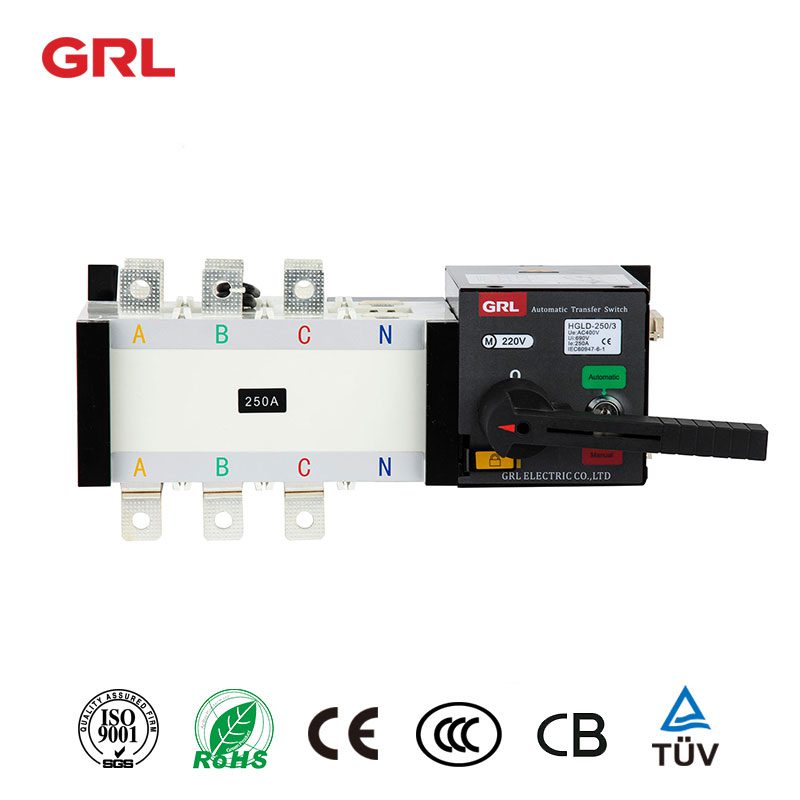Automatic Transfer Switch for Uninterrupted Power Supply

# Automatic Transfer Switch for Uninterrupted Power Supply
## What is an Automatic Transfer Switch?
An Automatic Transfer Switch (ATS) is a critical component in power management systems that ensures uninterrupted power supply by automatically switching between primary and backup power sources. This device plays a vital role in maintaining continuous operations for businesses, hospitals, data centers, and other facilities where power outages can have severe consequences.
## How Does an ATS Work?
The operation of an automatic transfer switch is both simple and sophisticated:
– Monitors the primary power source continuously
– Detects power failures or voltage fluctuations
– Automatically transfers the load to the backup generator
– Monitors the primary source for restoration
– Transfers back to the primary source when power is stable
– Includes a time delay to prevent nuisance transfers during momentary outages
## Key Features of Modern ATS Systems
Today’s automatic transfer switches come with advanced features that enhance reliability and performance:
### Intelligent Monitoring
Advanced microprocessor controls provide real-time monitoring of voltage, frequency, and phase rotation.
### Seamless Transition
Modern ATS units can transfer loads in as little as 1/6 of a second, minimizing disruption to sensitive equipment.
### Built-in Safety Mechanisms
Features like arc flash protection and overcurrent protection ensure safe operation.
### Remote Monitoring Capabilities
Many models offer connectivity options for remote monitoring and control via network connections.
## Types of Automatic Transfer Switches
There are several types of ATS configurations available:
### Open Transition (Break-Before-Make)
This type breaks connection with the primary source before connecting to the backup, causing a brief interruption.
### Closed Transition (Make-Before-Break)
Maintains continuous power by briefly paralleling both sources during transfer.
### Delayed Transition
Incorporates a programmed delay to allow for generator stabilization before transfer.
## Applications of Automatic Transfer Switches
Automatic transfer switches find applications in various sectors:
– Healthcare facilities
– Data centers and IT infrastructure
– Industrial manufacturing plants
– Commercial buildings
– Telecommunications
– Emergency services
## Benefits of Installing an ATS
Implementing an automatic transfer switch offers numerous advantages:
– Ensures business continuity during power outages
– Protects sensitive equipment from power fluctuations
– Reduces downtime and associated costs
– Automates power management without human intervention
– Improves overall system reliability
– Can be integrated with building management systems
## Maintenance Considerations
To ensure optimal performance of your ATS:
– Perform regular testing of the transfer mechanism
– Keep contacts clean and properly lubricated
– Verify proper operation of control circuits
– Maintain appropriate environmental conditions
– Follow manufacturer’s recommended maintenance schedule
Keyword: Automatic Transfer Switch
## Choosing the Right ATS for Your Needs
When selecting an automatic transfer switch, consider:
– Load requirements (voltage, current, phases)
– Transfer time requirements
– Space constraints
– Environmental conditions
– Future expansion needs
– Compliance with local electrical codes
## The Future of Automatic Transfer Switches
Emerging technologies are shaping the next generation of ATS systems:
– Integration with renewable energy sources
– Smart grid compatibility
– Enhanced predictive maintenance capabilities
– Improved energy efficiency
– Advanced cybersecurity features
Automatic transfer switches have become indispensable in our power-dependent world, providing the reliability and peace of mind that comes with uninterrupted power supply. As technology advances, these systems will continue to evolve, offering even greater protection and efficiency for critical power applications.

